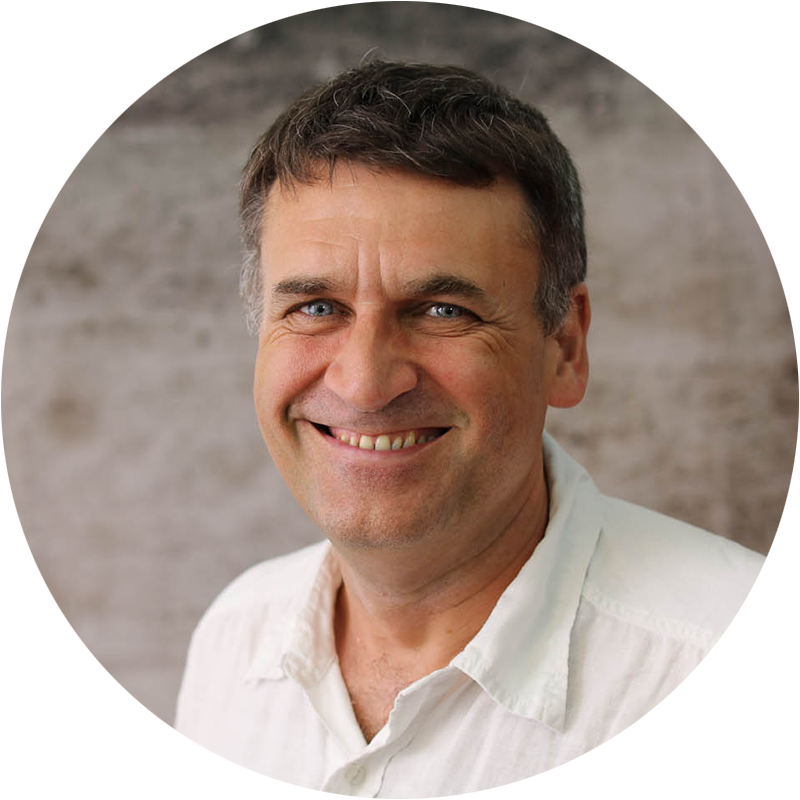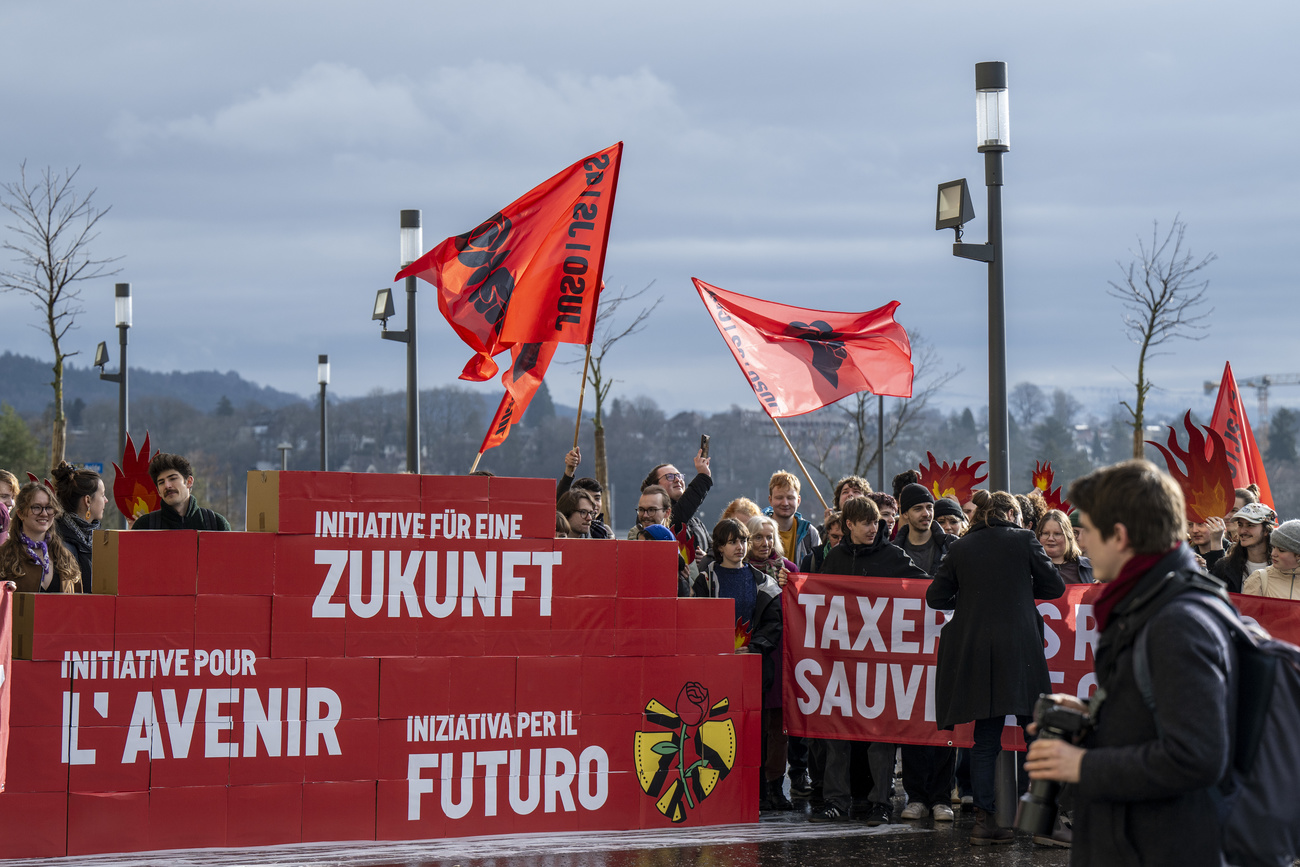‘If you don’t dream, you won’t get anything done’

Giovanni Giarrana was part of the wave of Italians who came to Switzerland in the 1960s. Having organised strikes in his youth, the jovial yet combative pensioner, born in Sicily but now living just outside Zurich, still wants to fight injustice.
“Giovanni, you’re always dreaming,” is apparently a frequent refrain of his friends, the 69-year-old tells swissinfo.ch on a glorious spring day. It has to be said, though, that the view of Lake Zurich from his terrace in Horgen would turn anyone into a dreamer.
“I always wanted to see the world, and in 1960 I was driven to emigrate [from Ravanusa] for the first time – I joined my uncle and two of my five brothers in France, in Lorraine,” he says.
Giarrana, who describes himself as a “citizen of the world”, explains how this desire to travel led him to Switzerland six years later and has never waned. With his Swiss wife Heidi, he has travelled all around the world, particularly in Asia – with the many reminders in his home as proof.
Lean and in a permanent good mood, Giarrana says travelling is, for him, a bit like reading. This unquenchable thirst to meet other people led him in 2009 to retrace the journey to Ravanusa that had brought him to Switzerland 43 years earlier.
What’s so special about that? Only the fact that he decided to walk there.
“In 2006, my son came here by bike. As a sort of challenge I told him that I would have done it on foot. And that’s what I did. I retired on May 29, 2009, and the following morning I set off. I covered 2,200 kilometres in 58 days, including three days of rest.”
The journey “refreshed many memories”. It was also, he says, to send a message “against racism and war and for the environment”.
First strike
Although as a boy Giarrana turned his hand to almost everything – “tailor, barber, carpenter, shoemaker, miller…” – he understood that he had to learn a trade properly.
“I registered at the vocational school in Gela [southern Sicily] and two years later I qualified as a general mechanic.”
It was in Gela that Giarrana organised his first strike. “We had lathes and drills but no tools – so we didn’t learn much. For three days we went and stood in front of the school but didn’t go in. On the fourth day the tools arrived and we finally began to work.”
A turning point in his life occurred during the school holidays. “I went to work for 40 days in France and while I was crossing Switzerland I got to know Heidi, a girl from Wädenswil [a district of Horgen] who had got on the wrong train.”
They started a lively correspondence and in 1981 they married. The couple now have a son and a daughter.
In 1966, after military service, he arrived in Switzerland. At the border reception centre in Chiasso he was subjected to an “utterly humiliating” medical procedure, which he says remains seared in the memory of all immigrants who underwent it. “We were all in single file, naked.”
Poor childhood
The post-war Sicily of Giarrana’s childhood was poor and almost feudal.
“We were a poor family with little land. My father always made me study, but at times I couldn’t go to school because we had to gather corn in the fields after the harvest,” he says.
His political education began on the long walks with his father to the family’s small farm – “two hours there and two hours back”.
“When we were alone he would talk to me about politics – he hated social injustice.”
In 1962, two years after leaving for France, Giarrana returned home owing to his father’s illness.
“He fell out of an olive tree and started having serious mental problems. He was saved only by the stubborn streak of my mother, who nursed him right up until his death in 1991.”
Union streak
He loved working for Swiss industrial company Escher Wyss, which at the time was part of Sulzer. He became a metal turner and was gradually entrusted with increasingly important work.
For nine years he lived in shacks, which came to be called the “Italian village”. “It was run by a guy from Trentino [in northern Italy] – a real tyrant.”
His co-workers had already tried to complain, but without success. Giarrana’s union streak – he would go on to hold various union positions and take part in various battles – came to life immediately.
“Given that he wouldn’t listen to reason, I told my colleagues ‘him or us’. One Wednesday we knew the managing director of Escher Wyss was visiting. There were about 150 of us and we headed for the personnel office to hand in our notice,” he says.
“When we met the managing director, he asked us what was going on and we explained the situation. He told us to return to work and we never saw the man from Trentino again.”
Don’t stop believing
But his good work wasn’t enough to shake off the “bloody Italian” tag. Despite the discrimination, Giarrana doesn’t bear a grudge. But when he sees new arrivals today being treated in exactly the same way, his blood boils.
“We Italians managed to gain respect. Everyone realises that we have contributed to Switzerland’s prosperity. But we had to wait 50 years!” he says.
“I will continue to fight so that in Switzerland there is a policy of welcome rather than marginalisation.”
At 69 does he still have dreams? “I wanted to march across the Amazon from Belém in Brazil to Mila in Peru to protest against deforestation, but I was advised against it – it was too dangerous what with the wood mafia.”
Plus he’s recently had heart problems. But stubbornness isn’t a quality Giarrana lacks.
“I’d like to try to organise an international march with the support of the WWF and Greenpeace – a sort of relay with volunteers from various countries,” he says.
Surely another dream? “Sure, but if you don’t dream you won’t get anything done at all. And I don’t intend to stop. One of my mottos is ‘it’s better to die on the front line than in your bed’.”
The first wave of immigration to Switzerland was in the late 19th century. Between 1888 and 1910, around 260,000 foreigners arrived in the country, mostly from surrounding nations.
With the post-Second World War economic boom, the need for workers dramatically increased. Between 1951 and 1970, 2.68 million foreigners entered Switzerland, peaking between 1961 and 1962. They either had an annual B residence permit or a permanent C residence permit. During the same period, three million seasonal permits were also handed out, mostly to Italian workers.
Immigration was restricted after 1963. Until 1971, it fell nearly 60 per cent. During the recession between 1974 and 1976, more than 300,000 foreigners had to return home. Populist theories of a foreign invasion gained currency among the Swiss population at the time, leading to votes demanding restrictions on the number of foreigners in the country, all rejected.
Immigration never really stopped, though, picking up after 1986 and becoming the main factor behind the country’s demographic growth. After easing off in 1994 because of a less favourable economic environment, it rose again from 1998 onwards. Since 2002, the foreign population has increased steadily thanks to a free movement accord with the European Union.
(Translated from Italian by Thomas Stephens)

In compliance with the JTI standards
More: SWI swissinfo.ch certified by the Journalism Trust Initiative









You can find an overview of ongoing debates with our journalists here . Please join us!
If you want to start a conversation about a topic raised in this article or want to report factual errors, email us at english@swissinfo.ch.